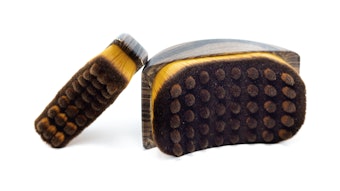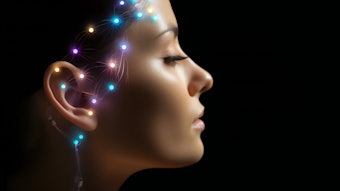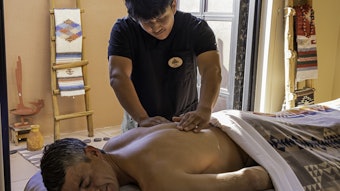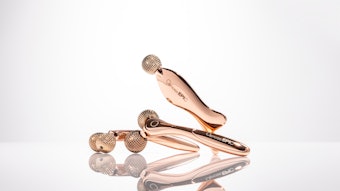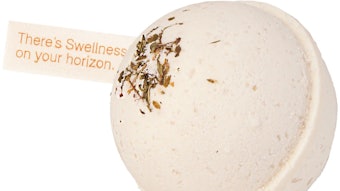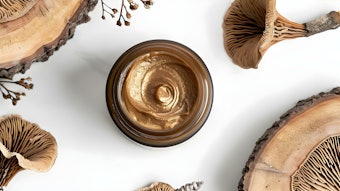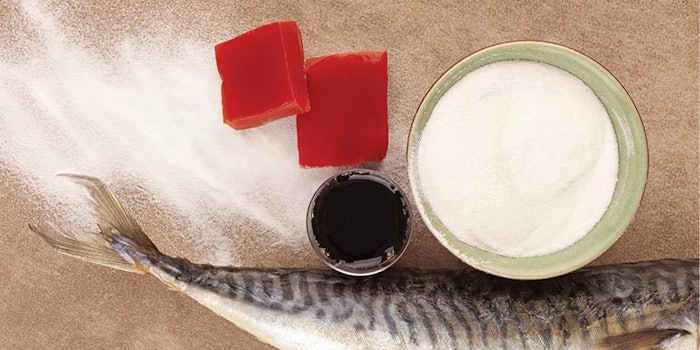
With age comes privileges. When you’re older, you get to stay up late, drive a car, go on a date or pick out your first phone. But there comes a time when the magic of aging disappears, and the reality or gravity of aging begins to set in.
Having spent my entire career in the beauty industry, I have access to the most fabulous products, technology, education and information, which has certainly benefited my aging journey. Yet, I have discovered that while you can look and feel amazing at your age, you are still your age! With the reckoning of my sixth decade rapidly approaching, I thought back to my grandmother and went digging through old photographs. Suffice to say my grandmother appeared to look “old” at 55 and honestly didn’t change much until her passing at age 89.
So, time to take stock. Do I look or feel like my grandmother looked at my age? No! I feel great, I have a clean bill of health and I am not taking any medications. So, what has changed and got me so worked up about the dreaded 60? You guessed it, it is my skin perception.
Why Collagen?
I asked myself how my skin is changing, and is there anything more I can do to improve it? I use active organic products, SPF, occasional peels, microneedling and microcurrent! So, that treats my skin outside and in. Still, it lacks that firm plumpness it once had. I see puffiness under my eyes, jowls forming near my jaw, accordion lines on my chest and those ever-present rings of life on my neck.
So, what makes the skin look and feel young? The answer is easy and so obvious—collagen. It makes up 75% of the skin and one-third of the protein in the entire body. Our bodies manufacture collagen by combing different amino acids or building blocks from protein found in food.
Collagen Types
Of the 28 types of collagens found in our body, types I, II, III, IV and V make up the majority. What do each of these collagen types do exactly in terms of aging for our skin and bodies?
Type I. Type I collagen makes up about 90% of the collagen in our bodies. Nearly all tissue contains Type I collagen, including tendons, bones, cartilage, connective tissues, and it is most abundant in the skin. It is packed fibers wound into a triple-helix structure that form this type of collagen, which has incredible strength and elasticity. Collagen I degrades over time, and it becomes most apparent in the skin with the appearance of fine lines, wrinkles and a loss of elasticity.
Type II. Type II collagen is found primarily in cartilage. While its structure is also a triple-helix, it has more loosely packed fibers. Type II provides the cushion in the cartilage for your bones and joints.
Type III. Type III collagen is often found alongside type I. It makes up muscles, organs, arteries, some connective tissues in the liver, spleen, blood vessels and internal organs, including the uterus. Very abundant in our skin, it helps with hydration and creates the cushion or plumpness within the dermis.
Type IV. Type IV collagen has a web-like pattern forming our loose supportive fascia and netting. This type makes up the thin layer outside the cells, giving the cells structure. It’s also found in the skin, liver, kidneys and other internal organs.
Type V. Type V collagen helps form keratin cell surfaces in our nails and hair. It’s also required to form the cells that create a pregnant woman’s placenta or the baby’s life support within the womb.
Collagen Use
Collagen is vital for blood clotting, wound healing and protecting the nervous system. Over time and depending on your lifestyle habits, you will have lost 1% of your collagen network by the time you are 40-years-old. Lifestyle factors that contribute to aging like lack of exercise, poor diet, smoking, alcohol consumption, high sugar intake and excess sun exposure will cause a greater decrease in protein levels overall.
So, the real questions become how much collagen is needed, and what are the best sources to meet recommended daily requirements. What other dietary support does collagen require for optimal absorption in our bodies?
Currently, health authorities haven’t established an official guideline on daily intake. According to the National Institute for Health, a 2019 study showed that consuming 2.5 to 15 grams of hydrolyzed collagen peptides daily were safe and effective. When consumed at 2.5 grams, patients reported less joint pain, increased skin health and hydration. Patients with scarring reported improved skin texture. A daily dose of 5 grams showed improved bone density and at the large dose of 15 grams of collagen peptides reported results were improved muscle mass and better overall body composition.1
Collagen Sources
The most common form of a collagen supplement is hydrolyzed collagen or collagen hydrolysate. It is derived from bovine (cattle), marine (spines, bones and roe from seafood), poultry (chicken or eggshells), pigs and other animal sources that are broken down into very small dried particles to be easily absorbed and added to liquids and food.
Undenatured collagen is the liquid raw collagen derived from chicken cartilage and chicken feet. Gelatin is another common source that is usually derived from bovine animal sources and must be cooked before being consumed. There are no vegan substitutes for collagen, and supplements may be dairy, gluten, sugar and soy free, but true collagen is only available from animal sources. Other nutrients the body needs to synthesize collagen are biotin (B7), vitamin C, zinc, copper and other trace minerals.
Can we really get enough collagen just through our diet? Foods rich in collagen are found specifically in tough cuts of meat like brisket and chuck steak. But, high intake of red meat is not healthy in the long run. Collagen found in the bones and skin of fresh or saltwater fish is available, if you like fish head soup.
Bone broth is a trending option and is found readily in soup aisles or made easily at home. The process is lengthy and involves roasting organic grown animal bones or chicken feet in the oven until brown at 400°F. Transfer the bones to a slow cooker and cover with water. Add onions, carrots, garlic and a bay leaf for flavor. Cook on a low heat for 24 hours covered with water, strain and refrigerate the broth in tightly closed containers. This yields about 8 cups of bone broth at 3.8 grams of collagen per cup.
Top Tips
There are many collagen supplements currently on the market today, and some are available for you to retail in your own beauty practice. I have tried various supplements over a few years, but I decided to commit this to my nutrition routine in June 2021. Here is what worked best for me and the differences I have seen over 90 plus days of consistent collagen supplementation.
- Seek a collagen that is all inclusive, meaning it is a combination of both animal and marine collagen.
- Make sure it is Eco-cert and comes from trusted, traceable resources with high user reviews and ratings. Credibility is paramount for optimal efficacy.
- Price point for quality is a factor. On average, you can expect to spend $1.75-$3.25 a day to add collagen to your hot/cold drinks or protein shakes. I consume mine twice daily.
- I prefer a powder form over the many flavored liquid options that require refrigeration. I chose a collagen supplement that is non-flavored, dissolves easily and travels well.
- Finally, add support supplements like a multi- vitamin and mineral sources.
Personal Results
Personally, I have lost weight more easily. My skin over all feels much firmer and much more hydrated. My nails are growing stronger and my hair has never been more full, long or shiny. I have noticeably less muscle soreness after walking, lifting weights or playing tuggy with my new puppy. Like many redheads, I have always battled blushing and reddening in my skin. You can always tell when I eat spicy food, drink wine or work out that vasodilation is my skin’s biggest challenge. Therefore, the most surprising benefit has been the overall reduction of inflammation in my skin.
Aging Gracefully
The medical, beauty and wellness industry often differ on what is the best approach to aging gracefully. It is clear to me that nutrition is paramount to that journey. There are many great books on nutrition especially with regards to collagen. If you are in doubt, give it a try for yourself. As for me, pass the collagen, please!
Malinda McHenry is a licensed cosmetologist, esthetician, instructor, former school owner, published author, speaker and business owner with over 32 years of experience. Known as “The Esthetic Professor,” she currently owns Bronzed N Beautiful Day Spa and The Academy of Advanced Aesthetic Arts, a post graduate hands on training center with online advanced education in Overland Park, Kansas.
